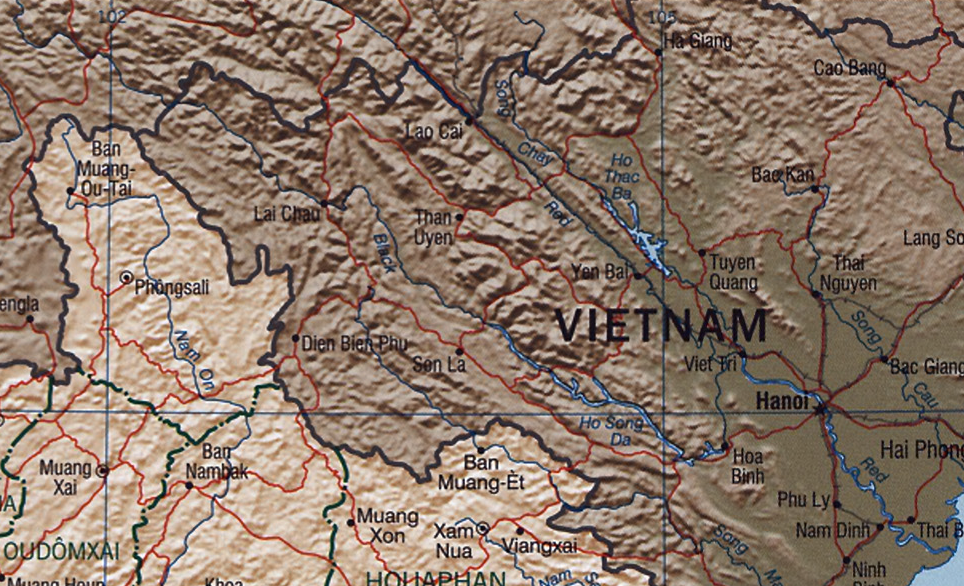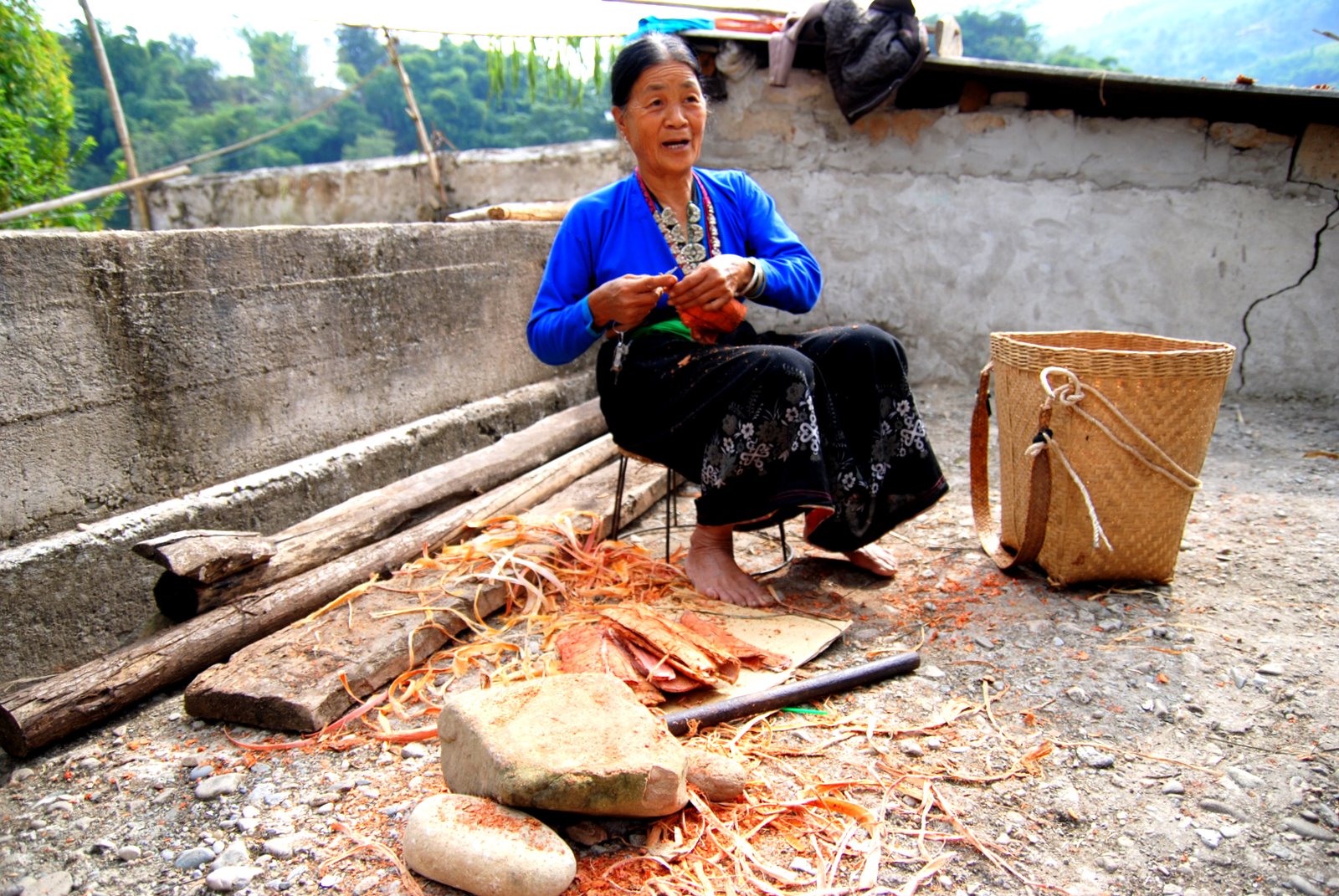|
Laha People
The La Ha (Vietnamese: người La Ha) are an ethnic group of Vietnam. Most La Ha live in the Yên Bái and Sơn La provinces, and numbered 10,157 people in 2019. They speak the Laha language, which is part of the Tai–Kadai language family. The La Ha celebrate the Pang A Nụn Ban Festival to show deep gratitude to their doctors. They offer them bitter bamboo and Mạ Rệ flower, both of which are popular drugs. History According to the ''Black Tai Chronicle'',Chamberlain, James. 1992.The Black Tai Chronicle of Muang Mouay Part I: Mythology, pp.46-47. In The ''Mon-Khmer Studies'', 21: 19-55; Phattiya, ''Prawattisat sipsong chutai'', p.147-152; Quoted in Baker, Chris, and Pasuk Phongpaichit. 2017. A History of Ayutthaya. Cambridge University Press. the Black Tai (Tai Dam people The Tai Dam ( Tai Dam: , , ) are an ethnic minority predominantly from China, northwest Vietnam, Laos, Thailand. They are part of the Tai peoples and ethnically similar to the Thai from Thailand, t ... [...More Info...] [...Related Items...] OR: [Wikipedia] [Google] [Baidu] |
Vietnam
Vietnam, officially the Socialist Republic of Vietnam (SRV), is a country at the eastern edge of mainland Southeast Asia, with an area of about and a population of over 100 million, making it the world's List of countries and dependencies by population, fifteenth-most populous country. One of two communist states in Southeast Asia, Vietnam shares land borders with China to the north, and Laos and Cambodia to the west. It shares Maritime boundary, maritime borders with Thailand through the Gulf of Thailand, and the Philippines, Indonesia, and Malaysia through the South China Sea. Its capital is Hanoi and its largest city is Ho Chi Minh City. Vietnam was inhabited by the Paleolithic age, with states established in the first millennium BC on the Red River Delta in modern-day northern Vietnam. Before the Han dynasty's invasion, Vietnam was marked by a vibrant mix of religion, culture, and social norms. The Han dynasty annexed Northern and Central Vietnam, which were subs ... [...More Info...] [...Related Items...] OR: [Wikipedia] [Google] [Baidu] |
Yên Bái Province
Yên Bái was a former Provinces of Vietnam, province located in Northwest (Vietnam), Northwest Vietnam. It shares borders with six provinces which are Hà Giang province, Lào Cai province, Lai Châu province, Sơn La province, Phú Thọ province, and Tuyên Quang province. The province covers an area of about and as of 2022 it had a population of 847,250 people. Yên Bái's history is important under the French Indochina, French colony, particularly the subsequent "Yên Bái mutiny", an uprising of Vietnamese soldiers in the French colonial army on 10 February 1930 in collaboration with civilian supporters who were members of the Việt Nam Quốc Dân Đảng (VNQDD, the Vietnamese Nationalist Party). Forestry and farming are the main economic stays of the province. Thác Bà Lake is a natural asset of the country along with its Thác Bà Hydroelectric Plant. Dong Cuong Festival is an important festival of the province. On June 12th, 2025, Yên Bái province is merged with L ... [...More Info...] [...Related Items...] OR: [Wikipedia] [Google] [Baidu] |
Sơn La Province
Sơn La is a province nestled in the Northwestern region of Vietnam. In 2018, Sơn La ranked 31st among Vietnam's administrative units in terms of population, 40th in Gross Regional Domestic Product (GRDP), 49th in GRDP per capita, and 63rd in GRDP growth rate. With a population of 1,242,700 people, its GRDP reached 47.223 trillion VND (approximately 2.0509 billion USD), GRDP per capita was 38 million VND (around 1,650 USD), and the GRDP growth rate was 5.59%. Sơn La is also the largest province by area in Northern Vietnam. History Middle Ages By ''Đại Việt sử ký toàn thư'', before the 15th century, the area where Sơn-la Province is now belongs to a kingdom called as Muaeng Ngõu-hỡu (mường Ngưu-hống, "Cobra kingdom"). However, in Tai epics, this land was called Muaeng-mol (Mường Mỗi, "barbarian land"). Because before the Tai tribes migrated, it was home to a group called Xá people ("commune men"). On May 24, 1886, the French provisional protection g ... [...More Info...] [...Related Items...] OR: [Wikipedia] [Google] [Baidu] |
Laha Language
Laha () is a Kra language spoken by approximately 1,400 people out of a total population of 5,686 Laha. It is spoken in Lào Cai and Sơn La provinces, Vietnam. Laha dialects had been documented in 1986 by Russian linguists and in 1996 by American linguist Jerold A. Edmondson. Many Laha can also converse in the Khmu language, and Laha-speaking areas also have significant Black Thai ( Tai Dam), Kháng, Ksongmul ( Ksingmul, Xinh-mun), and Hmong populations. Ostapirat (2000) considers the Laha dialects to form a subgroup of their own (Southern Kra) within the Kra branch.Ostapirat, Weera (2000).Proto-Kra. ''Linguistics of the Tibeto-Burman Area'' 23 (1): 1-251 Geographic distribution Gregerson & Edmondson (1997) and Wardlaw (2000) report the following locations of two Laha dialects, namely the Wet Laha and Dry Laha dialects. Wet Laha (Laha Ung, ') of Lào Cai and Lai Châu *Tà Mít Commune, Tân Uyên, Lai Châu, Vietnam (just north of the Black River) — known as the ... [...More Info...] [...Related Items...] OR: [Wikipedia] [Google] [Baidu] |
Vietnamese Language
Vietnamese () is an Austroasiatic languages, Austroasiatic language Speech, spoken primarily in Vietnam where it is the official language. It belongs to the Vietic languages, Vietic subgroup of the Austroasiatic language family. Vietnamese is spoken natively by around 86 million people, and as a second language by 11 million people, several times as many as the rest of the Austroasiatic family combined. It is the native language of Vietnamese people, ethnic Vietnamese (Kinh), as well as the second language, second or First language, first language for List of ethnic groups in Vietnam, other ethnicities of Vietnam, and used by Overseas Vietnamese, Vietnamese diaspora in the world. Like many languages in Southeast Asia and East Asia, Vietnamese is highly analytic language, analytic and is tone (linguistics), tonal. It has head-initial directionality, with subject–verb–object order and modifiers following the words they modify. It also uses noun classifier (linguistics), classi ... [...More Info...] [...Related Items...] OR: [Wikipedia] [Google] [Baidu] |
Animism
Animism (from meaning 'breath, spirit, life') is the belief that objects, places, and creatures all possess a distinct spiritual essence. Animism perceives all things—animals, plants, rocks, rivers, weather systems, human handiwork, and in some cases words—as being animated, having agency and free will. Animism is used in anthropology of religion as a term for the belief system of many Indigenous peoples in contrast to the relatively more recent development of organized religions. Animism is a metaphysical belief which focuses on the supernatural universe: specifically, on the concept of the immaterial soul. Although each culture has its own mythologies and rituals, animism is said to describe the most common, foundational thread of indigenous peoples' "spiritual" or "supernatural" perspectives. The animistic perspective is so widely held and inherent to most indigenous peoples that they often do not even have a word in their languages that corresponds to "animism" (o ... [...More Info...] [...Related Items...] OR: [Wikipedia] [Google] [Baidu] |
Buddhism
Buddhism, also known as Buddhadharma and Dharmavinaya, is an Indian religion and List of philosophies, philosophical tradition based on Pre-sectarian Buddhism, teachings attributed to the Buddha, a wandering teacher who lived in the 6th or 5th century Before the Common Era, BCE. It is the Major religious groups, world's fourth-largest religion, with about 500 million followers, known as Buddhists, who comprise four percent of the global population. It arose in the eastern Gangetic plain as a movement in the 5th century BCE, and gradually spread throughout much of Asia. Buddhism has subsequently played a major role in Asian culture and spirituality, eventually spreading to Western world, the West in the 20th century. According to tradition, the Buddha instructed his followers in a path of bhavana, development which leads to Enlightenment in Buddhism, awakening and moksha, full liberation from ''Duḥkha, dukkha'' (). He regarded this path as a Middle Way between extremes su ... [...More Info...] [...Related Items...] OR: [Wikipedia] [Google] [Baidu] |
Mon-Khmer Studies
''Mon-Khmer Studies'' was an academic journal that focused on Mon-Khmer languages. It was established in 1964 and ceased publication in 2016. From 1992 onwards, it was published by Mahidol University and SIL International SIL Global (formerly known as the Summer Institute of Linguistics International) is an evangelical Christian nonprofit organization whose main purpose is to study, develop and document languages, especially those that are lesser-known, to expan .... References External links Academic journals established in 1964 Linguistics journals Publications disestablished in 2016 English-language journals {{ling-journal-stub ... [...More Info...] [...Related Items...] OR: [Wikipedia] [Google] [Baidu] |
Tai Dam People
The Tai Dam ( Tai Dam: , , ) are an ethnic minority predominantly from China, northwest Vietnam, Laos, Thailand. They are part of the Tai peoples and ethnically similar to the Thai from Thailand, the Lao from Laos and the Shan from Shan State, Myanmar. Tai Dam means "Black Tai". This name comes from the black clothing worn by the group, especially females. In Vietnam they are called Thái Đen and are included in the group of the Thái people, together with the Thái Đỏ ("Red Tai"), Thái Trắng ("White Tai"), Phu Thai, Tày Thanh and Thái Hàng Tổng. The group of the Thái people is the third largest of the 54 ethnic groups recognized by the Vietnamese government. The Tai Dam's language is similar to Lao, but Tai Dam use their own unique writing system and traditionally rejected Buddhism. According to the Tai Dam's creation story, the Lo Cam family is to be the ruling class and the Luong the priests. Classification Under Vietnam's classification of the Tai peoples ... [...More Info...] [...Related Items...] OR: [Wikipedia] [Google] [Baidu] |
Red River (Asia)
The Red River or the Hong River (; ; Chữ Nôm: 瀧紅), also known as the ' (lit. "Main River"; Chữ Nôm: 瀧丐) in Vietnamese and the (, ') in Chinese, is a -long river that flows from Yunnan in Southwest China through northern Vietnam to the Gulf of Tonkin. According to C. Michael Hogan, the associated Red River Fault was instrumental in forming the entire South China Sea at least as early as 37 million years before present. The name red and southern position in China are associated in traditional cardinal directions. The river is relatively shallow, and carries a lot of reddish silt along its way, appearing red brown in colour. Geography The Red River begins in China's Yunnan province in the mountains south of Dali. Main headstreams Leqiu River, Xi River and Juli River confluence at Nanjian where they form the Lishe River. The Lishe River meets with another headstream, the Yijie River at Hongtupo, Chuxiong Prefecture. The river is commonl ... [...More Info...] [...Related Items...] OR: [Wikipedia] [Google] [Baidu] |



